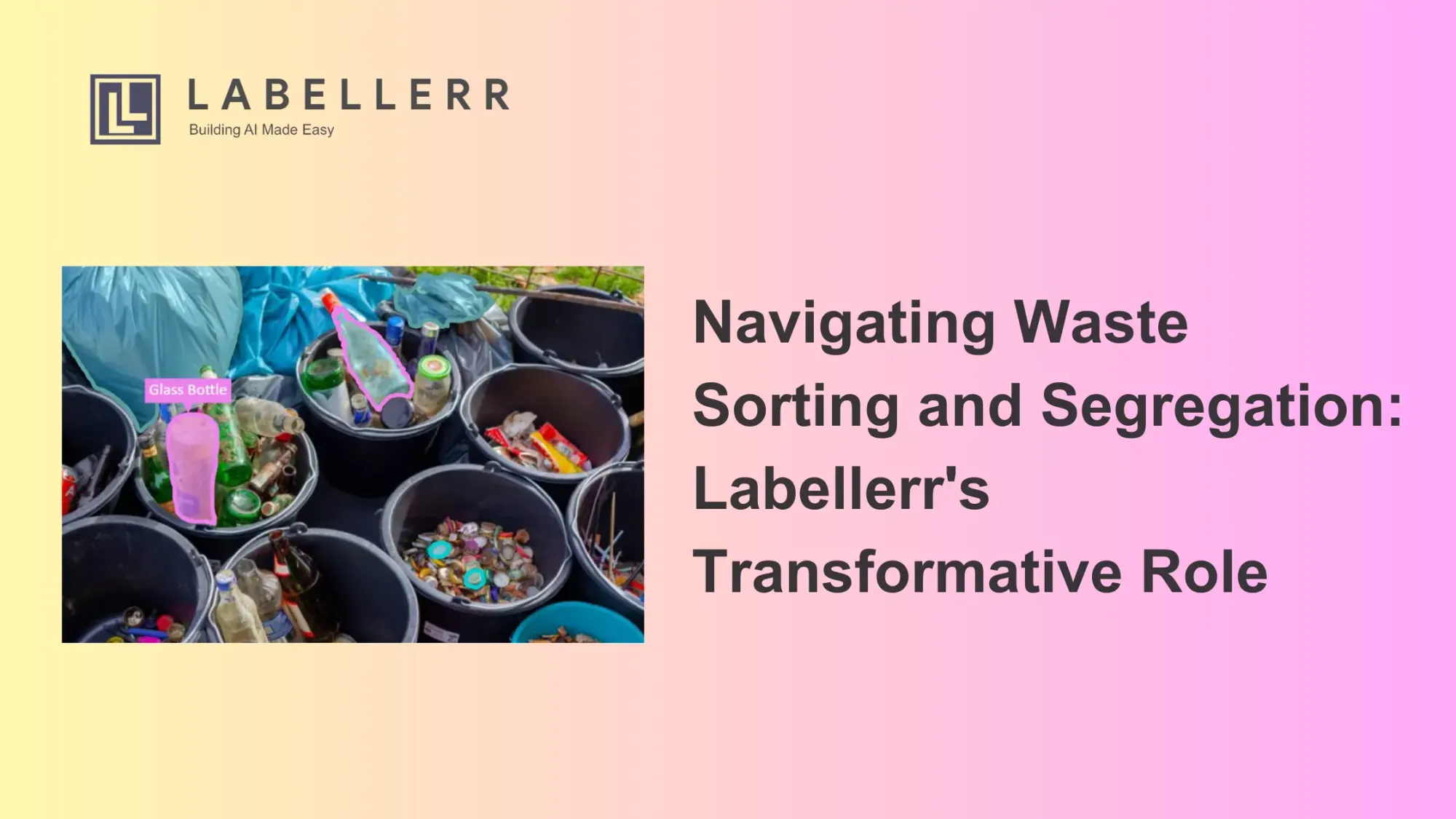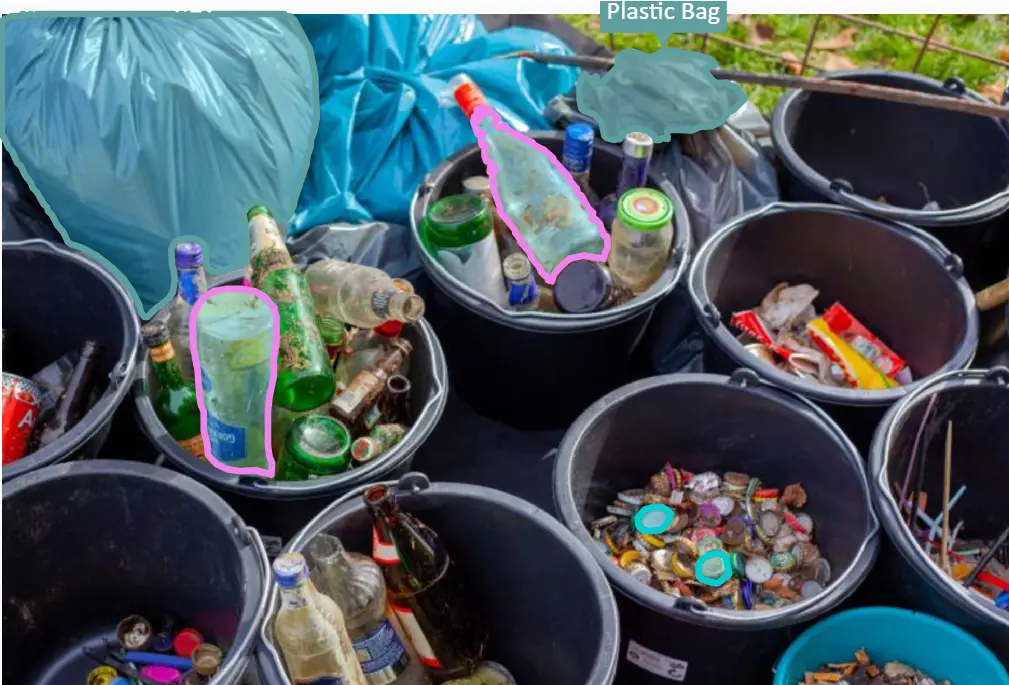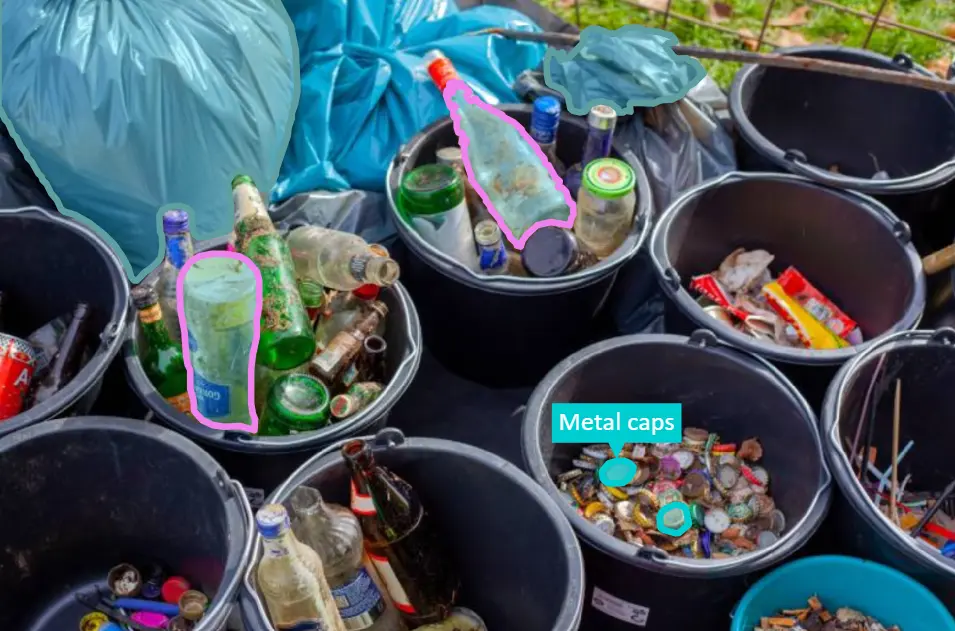Super Charge Waste Segmentation Annotation With Labellerr To Reduce Cost

Table of Contents
Introduction
In the world of energy, dealing with the problems of waste is really important.
When nuclear facilities are shut down, the waste they leave behind is dangerous.
Figuring out how to sort and separate this waste safely is a big challenge.
Imagine old nuclear places leaving behind dangerous stuff. It's tough to handle and sort without putting people in danger. Labellerr to fix this issue.
Labellerr is a helpful tool in solving this problem. It gets the job done without costing too much. This helps companies stay within their budget and make the project work.
Labellerr also makes things happen faster. It helps sort things in pictures really quickly, making the project finish faster too.
Even people who don't know much about tech can use it easily. Let's explore in-depth about the challenge and the solution provided by Labellerr.
Challenge
Sorting and segregating waste is hard because it's not safe for people to touch.
Imagine dealing with really dangerous stuff. Some smart companies and researchers realized there wasn't a good way to handle it, so they came up with a special computer program.
This program uses computer vision, which is like teaching a computer to see and understand things.
The goal is to make this program smart enough to sort and handle the dangerous waste all by itself. It's like having a helper that doesn't put people in danger.
Now, here's the challenge: they need pictures and information/labels about those pictures to teach the computer what to do.
It's like showing the computer what the dangerous stuff looks like, so it can learn to handle it safely.
This process is called image annotation – adding labels to the pictures to help the computer understand better.
Solution: Labellerr's Role
.gif)
Some forward-thinking companies and researchers devised a smart plan to address the challenge of waste sorting and segregation.
They harness the power of Labellerr's annotation platform, a remarkable tool designed to assist computers in understanding and recognizing various objects in images.
This tool specifically identifies crucial elements within waste storage scenes, paving the way for robots to safely and efficiently handle these objects without endangering human lives.
Labellerr emerges as a very helpful tool in this waste-sorting saga, simplifying and enhancing every step of the process.
Watch how Labellerr supercharges waste segmentation annotation in this video
1. Cost Savings
Labellerr lies in the budget for companies in the context of labeling images for developing an automated waste sorting model.
It's a practical and cost-effective solution that ensures the project stays within budget constraints.
By utilizing Labellerr, companies, and researchers can efficiently manage their resources, focusing on the critical task of waste sorting and segregation.
2. Reduced Turnaround Time in Waste Sorting
Imagine if you could make waste sorting happen 10 times faster than usual.
Labellerr helps achieve exactly that by labeling images needed for waste sorting 10x faster.
It accelerates the labeling process, making the sorting of waste images much quicker.
This faster turnaround time is crucial for efficiently managing and completing waste sorting and segregation projects.
3. Quality Control for Waste Sorting
Labellerr ensures perfection in waste sorting. It facilitates robust quality control, verifying that the labeled data, representing sorted waste images, is highly accurate.
This meticulous attention to detail is vital for creating reliable datasets and training computer models to effectively sort and segregate waste.
4. Scale Up and Volume for Waste Sorting
Labellerr is capable of handling the increased workload and volume associated with waste sorting.
Its scalability ensures that companies and researchers can seamlessly scale up their waste sorting projects.
Managing large amounts of data becomes more manageable, enabling a more efficient and effective waste sorting and segregation process.

5. Custom Workflows for Waste Sorting
Labellerr's image annotation platform offers customizable workflows, tailor-made for the unique requirements of waste sorting and segregation.
This flexibility allows companies and researchers to design annotation processes that align precisely with the characteristics of the waste materials, ensuring a more accurate and efficient sorting system.
6. Foundation Model-Based Labeling
Labellerr employs foundation models like CLIP, SAM, DINO, and others for image labeling.
This advanced approach accelerates the auto-labeling process, a crucial aspect of creating training data for computer vision applications in waste sorting.
These foundation models enhance the understanding of waste images, contributing to the overall intelligence of the sorting system.
7. Active Learning Based Labeling
It incorporates active learning, a dynamic process where the system learns from initially annotated data and continuously improves its sorting capabilities.
This feature is particularly valuable for waste sorting projects, as the system adapts and becomes more proficient over time, ensuring a more accurate and adaptive waste sorting solution.
8. Automated QA (Quality Assurance)
Labellerr facilitates automated quality assurance processes, ensuring that the labeled data for waste sorting maintains high accuracy levels.
The system adds a layer of confidence to the sorting process, minimizing errors and enhancing the reliability of the annotated images used for training waste sorting models.
9. Automated Import and Export of Data
Labellerr streamlines the data management process by automating the import and export of data.
This feature is particularly beneficial for waste sorting projects dealing with large datasets, reducing manual efforts and saving time in handling and organizing the diverse range of images associated with waste materials.
10. Collaborative Annotation Pipeline
Labellerr promotes collaboration by allowing multiple users with different roles to contribute to the annotation process.
This collaborative approach ensures diverse perspectives and expertise are considered in the sorting and segregation of waste, leading to a more comprehensive and accurate understanding of the materials involved.

Conclusion
By leveraging Labellerr's annotation platform, companies and researchers can create training datasets specifically tailored for waste sorting and segregation.
This involves utilizing segmentation to break down images into meaningful parts, allowing the computer to comprehend essential details related to waste materials.
Labellerr, thus, contributes significantly to the advancement of smart and safe waste sorting and segregation.
Frequently Asked Questions
1. Can robotic waste sorting revolutionize the waste management industry?
Robotic waste sorting holds the potential to revolutionize the waste management industry by significantly improving efficiency and sustainability.
With advanced computer vision and machine learning technologies, robots can accurately identify and separate different types of waste materials, enhancing recycling efforts and reducing contamination.
This innovation not only increases the overall speed of waste sorting but also minimizes human exposure to hazardous materials.
Additionally, robotic waste sorting contributes to the optimization of resource utilization, paving the way for a more environmentally friendly and economically viable waste management approach.
2. Why is sorting garbage important?
Sorting garbage is crucial for several reasons. First and foremost, it facilitates effective recycling, allowing valuable materials to be recovered and reused, reducing the demand for new resources.
Proper waste sorting minimizes environmental impact by decreasing pollution and conserving energy. It also enhances the efficiency of waste management systems, reducing the burden on landfills and promoting sustainable practices.
Additionally, sorted garbage helps prevent contamination, ensuring that hazardous materials are disposed of safely and that recyclables maintain their quality.
Overall, sorting garbage plays a vital role in promoting a cleaner, greener, and more sustainable environment.
3. Why is waste segregation important?
Waste segregation is crucial for effective waste management and environmental sustainability.
By separating different types of waste at the source, such as recyclables, organic matter, and hazardous materials, the recycling process becomes more efficient.
This practice enables the recovery of valuable materials, reduces the strain on landfills, and promotes recycling initiatives.
Additionally, waste segregation helps prevent contamination, ensuring that recyclable materials maintain their quality and are more likely to be recycled.
Ultimately, waste segregation is a key component in the larger effort to minimize environmental impact, conserve resources, and move towards a more sustainable and circular economy.

Simplify Your Data Annotation Workflow With Proven Strategies
.png)

